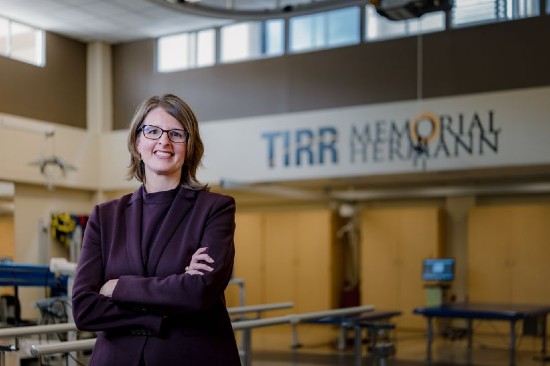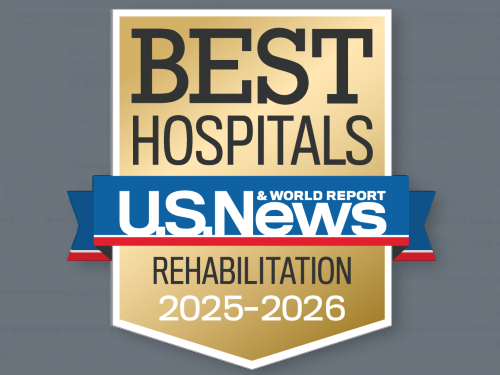 The passage of legislation naming TIRR Memorial Hermann as a national rehabilitation innovation center reflects the culmination of more than a decade of advocacy work and will allow for the preservation of cutting-edge rehabilitation for generations to come, officials with the health system say.
The passage of legislation naming TIRR Memorial Hermann as a national rehabilitation innovation center reflects the culmination of more than a decade of advocacy work and will allow for the preservation of cutting-edge rehabilitation for generations to come, officials with the health system say.
The Dr. Joanne Smith Memorial Rehabilitation Innovation Centers Act (P.L. 177-341), the development of which was spearheaded by TIRR Memorial Hermann, was signed into law by President Joe Biden on Jan. 5, 2023.
“Work on this process began in October of 2011, and the passage of the legislation is the result of more than 11 years of work with multiple presidential administrations and hundreds of members of Congress,” says Freddy Warner, the chief government relations officer with the Memorial Hermann Health System.
“It was a long journey,” Warner adds, joking that he could likely write a book on the process and the different barriers that must be overcome to get a piece of legislation passed.
“At the end of the day, the pride that all of us feel is in the fact that we didn’t lose focus,” he notes. “We wanted to have an acknowledgment of the things being done at TIRR Memorial Hermann and at a small number of freestanding inpatient rehabilitation facilities across the country. We are treating the most complex patients, providing the opportunity for physicians, nurses, researchers, clinicians, therapists to practice at the top of their fields.”
“There are very few organizations across the country that deliver rehabilitation care and beyond the way we do at TIRR Memorial Hermann and the colleague sites that are part of the coalition,” adds Rhonda M. Abbott, PT, FACHE, the senior vice president and CEO at TIRR Memorial Hermann.
According to Warner, the legislative effort began during 2010, with passage of the Affordable Care Act. The Act has allowed for significant changes in both health care delivery and reimbursement and caused experts at TIRR Memorial Hermann and other high-level rehabilitation centers to approach lawmakers with a proposal for a center of excellence‒type designation that eventually was renamed the national rehabilitation innovation center.
Along with TIRR Memorial Hermann, the original group of centers included the Rehabilitation Institute of Chicago, which has since been renamed the Shirley Ryan AbilityLab, as well MedStar National Rehabilitation Hospital in Washington, D.C., the University of Pittsburgh Medical Center and the Rancho Los Amigos in Los Angeles. Since then, Spaulding Rehabilitation Hospital in Boston, Spain Rehabilitation Center in Birmingham, Ala., and Mount Sinai Rehabilitation Center in New York City have been added.
“We were interested in finding a way we could demonstrate to the federal regulatory agencies that our facility is different, and that reimbursement needs to be protected,” Warner says. “We wanted there always to be incentives for research and the work done to try to motivate and incentivize organizations and individuals to practice at the top of rehabilitation medicine.”

He adds: “These centers are global destination facilities for patients, and anyone involved with rehabilitation medicine wishing to be in venues where they are going to treat the most complex patients and have opportunities to work side-by-side on care teams that are at the pinnacle of rehabilitation medicine.”
Inspiration came from legislation developed during the 1970s and 1980s that focused on top cancer hospitals. With the assistance of several members of Congress, including Dick Durbin, D-Ill.; Mark Kirk, R-Ill.; Pete Olson, R-Texas; Gene Green, D-Texas; Bill Cassidy, MD, R-La.; Kevin Brady, R-Texas; and Garrett Graves, R-La., the team began to develop proposed legislation focused on engendering support and acknowledging the unique nature of these facilities.
With much time and effort, the Act began to take shape.
“It took such a long time that you begin to think it won’t happen during your career, if ever,” Abbott recalls. “It still surprises me what a small number of sites across the country meet the criteria for this level of research and care.”
She continues: “Without these unique rehabilitation centers in the country who are evolving and innovating care, what rehabilitation is and looks like could be negatively affected. Fast forward 10 or 20 years and who knows what the face of rehabilitation could look like for these patients with these life-altering catastrophic injuries and illnesses, if we don’t recognize that there are centers that do this differently and preserve the capability for the long haul.”
The passage of the legislation will provide recognition for these organizations, financial support for critical research and a promise to patients that innovative care will continue far into the future.
“When something becomes law, it is a different declaration that stands the test of time,” Abbott says. “We have an obligation to help other practices through sharing and dissemination of knowledge—this formalizes that and provides additional structure regarding how we may help continuing the creation and sharing of these resources.”
